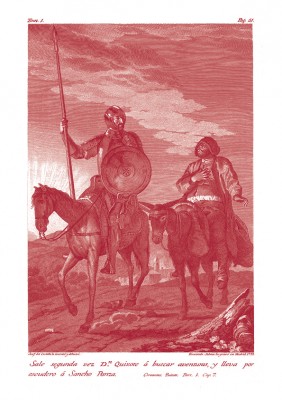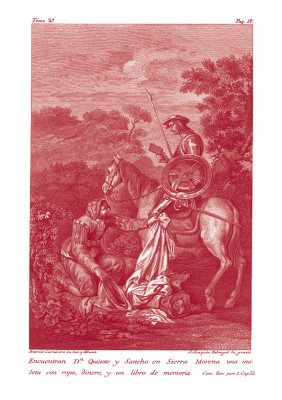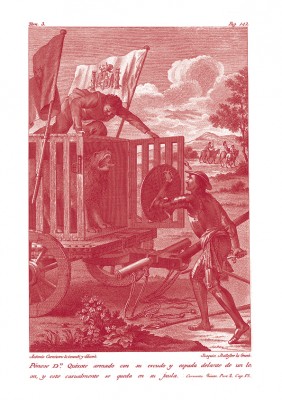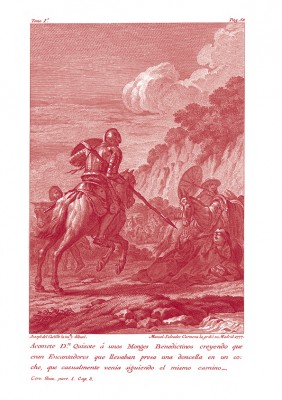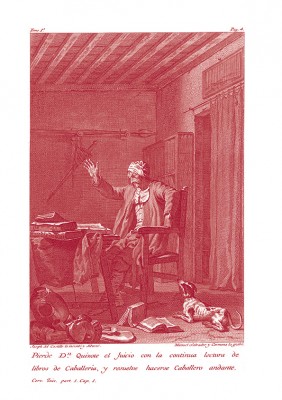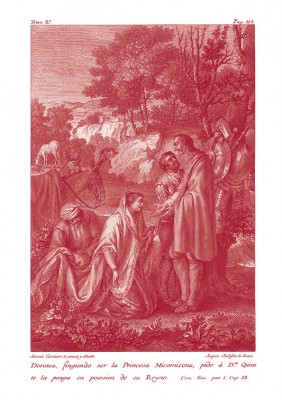CERVANTES, 400 YEARS
The Cervantes Collection, begun by Miguel Mateu Pla (1898-1972), with 5,000 books, is one of the most important in private hands; of these, over a thousand are the different editions and translations of El Ingenioso Hidalgo Don Quixote de La Mancha, considered the most important work of universal literature.
This year’s exhibition has enabled Peralada Castle Library to join the commemoration marking the four-hundredth anniversary of the death of Miguel de Cervantes Saavedra (1547-1616), displaying the main bibliographical treasures of Peralada’s Cervantes Collection, spreading the word about all Cervantes’ work and the iconography created and providing a vision of the universality of the Spanish language.
Visitors will see the interpretation of the imaginary horse Clavileño, a work by artist Antoni Federico, welcoming them to the bibliographic and museographic exhibition, then stroll through literature from the Spanish Golden Age, contemporary to Cervantes, enjoy the explanation of the different episodes in his life, such as his participation in The Battle of Lepanto and his capture, and be able to buy numerous figurative interpretations of his portrait.
Of the many editions of Don Quixote – differentiating the more popular sixteenth- and seventeenth-century ones from the more sumptuous editions that appeared after the eighteenth century – the oldest copy is the Valencian edition of 1605; the Prince edition of the second part printed in Madrid in 1615; the first and second part of the Barcelona edition of 1617 and the second apocryphal part written under the pseudonym of Alonso Fernández de Avellaneda (Tarragona, 1614). This incredible body of work includes the volume printed in Spanish in London in 1738, the Spanish Royal Academy edition by Joaquín Ibarra of 1780 and the Madrid edition by Sancha of 1797.
Other treasures for visitors to enjoy are La Galatea, the Novelas Ejemplares Exemplary Novels, Numancia, and the posthumous novel, Persiles and Segismunda.
As a library specialising in the history of art, we will be showing the iconographic evolution of the protagonists of the novel – Don Quixote and his shield-bearer Sancho Panza – and of the most representative scenes, displaying this iconography captured in works of art using different techniques, such as oils by Sert; watercolours by Tusell; engravings by Coypel, Van der Banck, José del Castillo, Johannot, Doré and Pinelli, and even lithographs by Salvador Dalí. Cervantes iconography was one of the first on the merchandising scene and retains its position to this day.
Another striking aspect of the exhibition are the huge impact and rapid spread of Cervantes’ work around the world, thanks to its many translations into a wide range of languages and the adaptation of the text for children and teenagers.
We are also delighted to be exhibiting rarities and curiosities, some of them unique, such as the Quixote-esque dedication by Salvador Dalí to Miquel Mateu – a sketch that has become the logo of the Peralada Group – who he defined as the “Don Quixote of Portlligat”, the manuscript in Armenian and the prints made on cork in the Baix Empordà town of Sant Feliu de Guíxols.
Inés Padrosa Gorgot
Librarian

